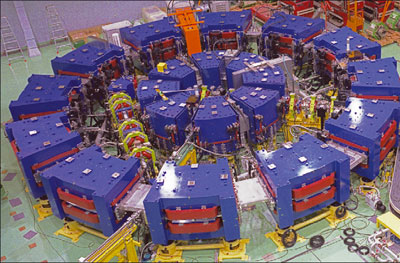
Image credit: KURRI.
After a series of preliminary tests held on 26–27 February the Research Reactor Institute of Kyoto University (KURRI) received a national licence to conduct experiments for an accelerator-driven subcritical reactor (ADSR) using the Kyoto University Critical Assembly (KUCA). The first ADSR experiment began on 4 March using a newly developed fixed-field alternating-gradient (FFAG) proton accelerator connected to the KUCA. This marks the first use of an FFAG accelerator built for a specific application rather than as a prototype, and it heralds the start of a new era.
The Development of an Accelerator Driven Subcritical Reactor using an FFAG Proton Accelerator project, which is now reaching its goal, was initiated in 2002 under a contract with the Ministry of Education, Culture, Sports, Science and Technology (MEXT) as part of the Technology Development Project for Innovative Nuclear Energy Systems. In the experiment the FFAG accelerator provides a high-energy proton beam to a heavy-metal target in the KUCA to produce spallation neutrons, which in turn drive fission chain reactions in the KUCA-A Core.
The aim is to examine the feasibility of an ADSR and to lay the foundations for its development. The fact that the reactor is driven slightly below criticality makes this system intrinsically safe: as soon as the external neutron supply is stopped, fission chain reactions cease. ADSRs may also be useful for the transmutation of long-lived transuranic elements into shorter-lived or stable elements. They therefore have the potential to be used as energy amplifiers, neutron sources and transmutation systems.





